
I recently visited Abbeyknockmoy Abbey in Co. Galway, which must be one of the most impressive Cistercian monasteries in Ireland. The extensive remains comprise a large transitional style church of early 13th century date, a now largely ruined central tower and the remains of a cloister. The east wing of the cloister is the most extant and it contains the sacristy, chapter house and a later garderobe. The abbey was founded in AD 1189/90 by Cathal Crovdearg O’Connor, king of Connacht, apparently in fulfilment of a vow he made prior to his victory over an English army led by Almeric de St. Lawrence.

In his later years Cathal Crovdearg retired to Abbeyknockmoy to become a monk and this was where he was buried on his death in 1224. The abbey thereafter became a mausoleum for several generations of the O’Connor family. There is a finely sculptured stone head in the abbey church, which Professor Roger Stalley has suggested may actually represent Cathal Crovdearg, the abbey’s founder (see Doran & Lyttleton, 2008, 54-55). Although the chin and nose of the head were damaged in antiquity the carefully defined eyes, an elaborate crown and long curly hair still survive.
Despite its impressive ruins Abbeyknockmoy doesn’t appear to have been a rich house. In the taxation of 1302-06 the income of the abbey was valued at £42 and in 1411 the abbot complained to the pope that his house was so poor that he could not maintain his community properly and one of his monks was granted licence to serve a parish church. By the end of the sixteenth century the house was fairing little better: the inquisition of 1584 put the income of the house at just £78 (information from here).
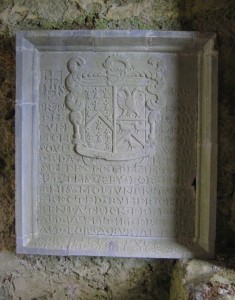
The abbey suffered a similar fate to the rest of the monasteries in Britain and Ireland when it was dissolved on the orders of Henry VIII in 1542. However, the abbot Hugh O’Kelly successfully defended his possessions by acknowledging the supremacy of the king and renouncing the pope! In return he was granted the abbey and its lands for life with the stipulation that he furnish 60 horse-men, a battle of Gallowglasses (Scottish mercenaries) and 60 foot-soldiers for the king’s service in Connact. For some time afterwards a form of secularised monasticism appears to have been practised at the abbey. This had ended by 1652 when the Blake family were granted the monastery and its lands and they remained in possession of the property up until relatively recently.
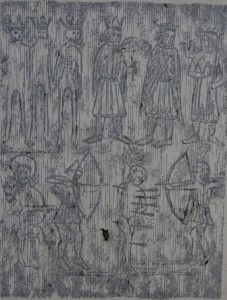
The abbey ruins contain some fine stonework, especially in the chancel of the church (this is where the altar stood and is unfortunately closed to the public). The chancel also contains one of the last surviving medieval frescos in Ireland. Frescos are highly coloured pictures that were painted on the wall while the plaster was still wet so the colours became one with the plasterwork. The lower panel of the main fresco at Abbeyknockmoy shows Christ with his hand raised and the martyrdom of Saint Sebastian (St. Sebastian was often invoked against plague). Above these are three dead kings and three living kings. Under the kings is an inscription which reads ‘We have been as you are, you will be as we are’.

The chancel also contains a tomb commemorating Maelsechnaill O Ceallaigh (O’Kelly), king of Ui Mhaine, and his wife Fionnghuala, daughter of Toirdealbhach O Conchobair (O’Connor), king of Connacht, who died in 1401 and 1403 respectively. This tomb contains one of the very few late medieval stone inscriptions written in the Irish language.
The fields around the abbey contain extensive earthworks, which appear to represent demolished buildings, garden areas and property boundaries. Their survival in an era of modern argricultural practices is remarkable and they suggest that the monastery was once surrounded by an extensive area of habitation.
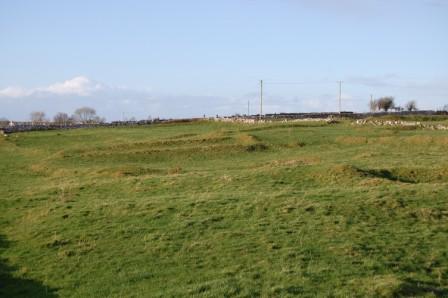

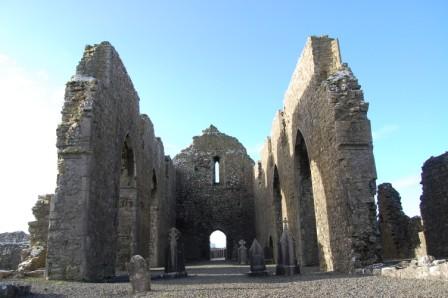

References
Doran, L. & Lyttleton, J. eds. 2008. Lordship in Medieval Ireland: Image and reality . Dublin: Four Courts Press

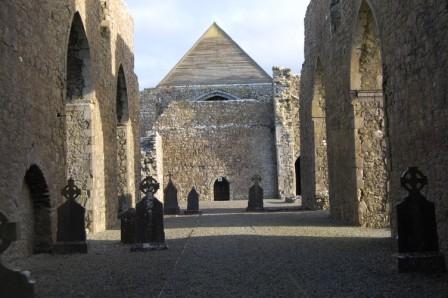



Thank you for this very interesting piece on Cistercian Abbey, Abbeyknockmoy which I have often seen from a distance on the N63. Next time I am passing I will make a point of visiting the abbey – It seems to be in very good condition but very little is ever heard about it.
Thanks Kathleen, the site is well worth a visit
great article, do you know who is in charge of the abbey now?
Thanks, Gav, not 100% sure, but probably the OPW/National Mounuments Section
hi,
My ancestors were married and baptized at the Catholic Chapel at Abbeyknockmoy from the early 1800s onwards.
The photo of the church shown here was in use between what dates ??
Thanks and Regards,
SEAN
Sorry Sean,
I missed your post. The church in the article above went out of use well before the 19th century, although the graveyard continued to be used for burials. I’m afraid I’m not sure where the Roman Catholic Chapel was. Maybe you could try and contact the local priest, he might know more information. His details are here, http://www.mylocalnews.ie/galway-14/abbeyknockmoy-monivea-360/church-4/roman-catholic-20/abbeyknockmoy-parish-946/.
All the best,
Colm.
I am stunned that the remains of an important irish heritage – the wall paintings – are not shown! ”frescoes located to the right of these . . . !” There are SO few wall paintings left in Ireland that I feel they deserve much more attention indeed!
Hi Chris, thanks for the comment. Unfortunately for me the wall paintings are in an area that is restricted to members of the general public. I would have loved to have got a photo of the frescos but my access was blocked by iron bars. Maybe next time I’ll track down the man with the key.
Hi Colm. Great article. I was just wondering where the image of the fresco depiction depiction comes from. Is it from the book you mentioned – Lordship in Medieval Ireland: Image and reality ?
Hi Michael,
You have me in a bind here, I actually can’t remember the image source. I’ve a sneaking suspicion that it may from a display panel at the site, which I photoed and cropped (or maybe not). Sorry I can’t be of more help. Colm
Hi Colm.
Thanks for getting back to me. I just checked a photo of the display panel that I have myself and indeed you are correct. Do you have any idea what the carving of the hand indicates? Does it have a particular significance?
Thanks.
Hi Michael, not 100% certain, but it may represent the hand of god https://en.wikipedia.org/wiki/Hand_of_God_(art)
I randomly googled the Abbey and came across this site. I played in the ruins of the abbey often as a child together with my friends. It was a favourite haunt. We used to try working out the inscriptions on the old graves and also to pinpoint the grave of Cathal Crobhdearg Ua Conchobair (we pronounced it in Irish, Croch-hoor ). We were also able to climb onto the remnants of the first floor via remnants of a stairs. Looking back it was so dangerous as we were only 8-10-year-olds. I clearly remember the fresco. I always thought it was frightening and macabre. My Dad in his later years decided to write a book about the Abbey. He spent hours researching it in the National Library in Dublin and elsewhere. Sadly he passed away suddenly in 1984 and all his paperwork was thrown away in error. I also remember him saying that an abbot (or monk?) had been censured for having his hair washed by a woman! My parents and many members of my family are buried in the graveyard adjoining the Abbey.
Excellent historical piece and questions and comments very helpful. My ancestors the Rabbits came from Abbey and some are buried in the graveyard beside this old Abbey. I am going to visit there next week August 2020